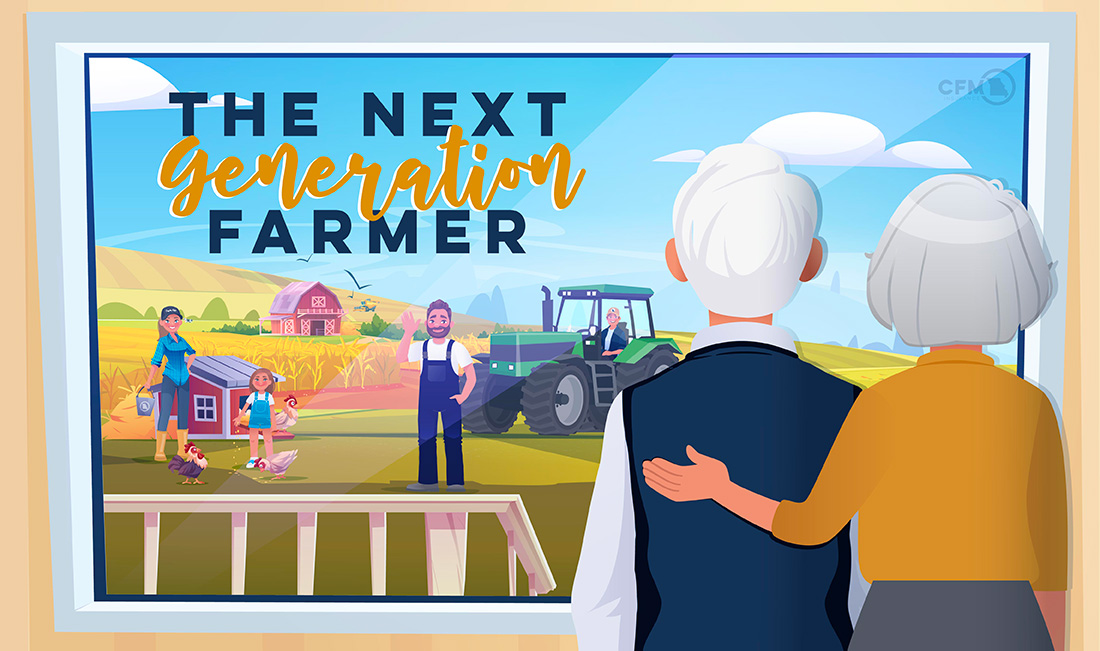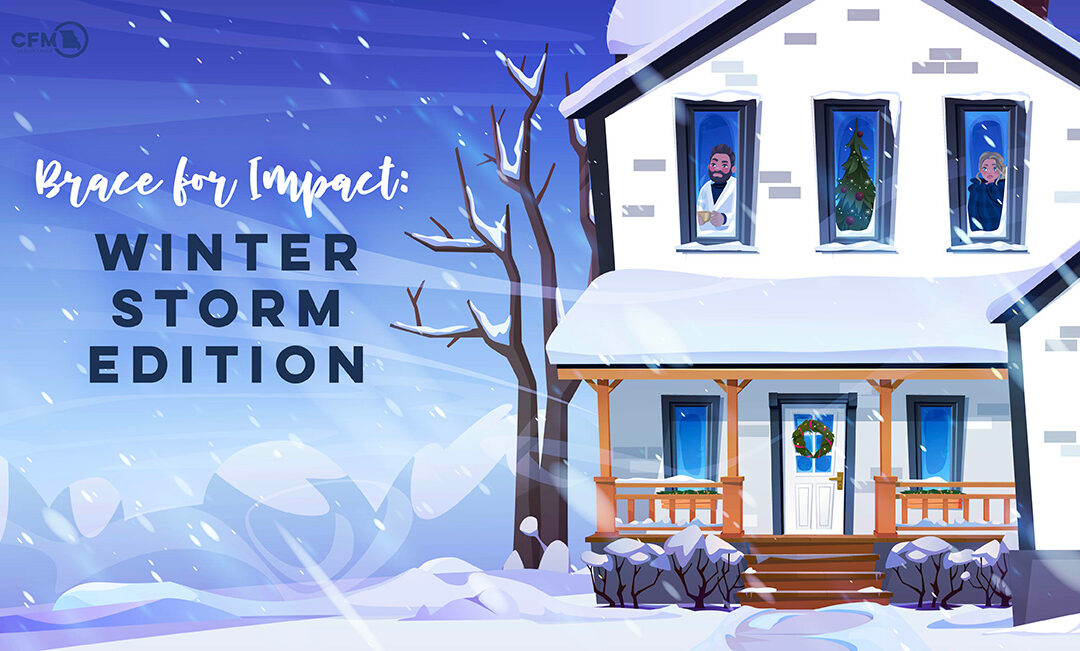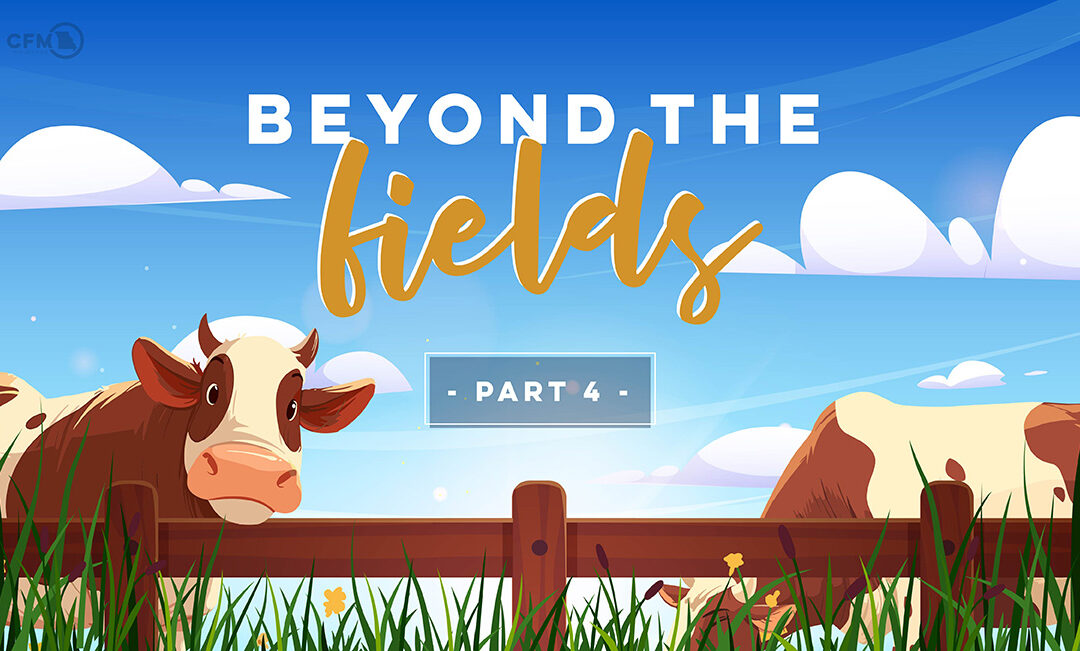
Inheriting a family farm is one of life’s most meaningful milestones—but it can also be one of the most overwhelming. You’re not just taking over land and equipment; you’re stepping into decades of memories, traditions, and hard-earned lessons. And while the emotional weight of that transition is heavy, the practical side—like updating outdated insurance policies—is just as critical.
Because what protected your grandparents’ farm 30 years ago may not protect yours today.
This is the story of CFM Policyholders Penny and Parker—two everyday folks who found themselves suddenly at the helm of a generational farm. Their journey might sound familiar, and if it does, we hope it gives you the confidence to take your own first steps—with the right support and the right protection in place.
A New Beginning: Picking Up the Reins of a Family Legacy
When Parker’s grandparents decided to step away from farming due to failing health, their farm in rural Missouri didn’t just go to the next name on a legal document—it went to the two people they trusted most to carry the torch: Parker and his wife, Penny.
The handoff was an honor. But it also came with a thousand quiet questions. What now? What’s covered? What’s not? How do you step into something this big without losing sight of what it means—or what it takes to protect it?
Like many farm families, the decision to pass the farm down wasn’t made lightly—and neither was accepting it. For Parker, the land was part of his DNA, full of childhood memories and lessons learned under the Missouri sun. For Penny, it was unfamiliar terrain, but she brought structure, smarts, and heart to match.
Still, they felt unsure. They knew how to care about the farm—but not necessarily how to care for it.
That’s when Agent Angie stepped in—with a calm voice, clear answers, and that signature CFM sense of “you’re not in this alone.” She helped them think through every corner of the farm—from what needed coverage now, to how they’d protect it long-term.
This is Penny and Parker’s story—but it’s also the story of so many families standing at a crossroads between legacy and responsibility, emotion and action.
1. The Emotional Side of Inheriting a Family Farm
For Penny and Parker, the inheritance felt personal. This was the land where Parker helped plant his first field, where generations had weathered droughts, storms, and long harvest days. But honoring the past came with pressure—and some tough conversations.
They sat down with family to discuss who would take over, how the assets would be divided, and what would happen if something went wrong.
These real-life conversations are where emotions meet responsibility—and where the right insurance protection becomes part of the bigger picture. It’s not just about honoring the past, but about making sure that legacy can stand strong into the future.
2. Assessing the Current State of the Farm
Once the paperwork was signed, reality set in. The barn roof had seen better days. Equipment was outdated. Records were barely legible. It wasn’t just sentimental—it was work.
Inheriting a family farm can be a deeply meaningful experience—but it also comes with its fair share of hiccups. Here are a few common ones you may relate to:
1. Unclear Succession Planning
Sometimes the will or transition plan lacks clarity. Multiple heirs may believe they have ownership or decision-making power, leading to disputes or legal entanglements.
Example Hiccup: Two siblings inherit the farm but weren’t given clear roles—now they’re in constant disagreement about whether to sell or keep it running.
2. Financial Burdens
Inheriting the land often means taking on existing debt, tax liabilities, or the need for immediate investment in equipment or infrastructure.
Example Hiccup: The new owner discovers they owe estate taxes or need to upgrade outdated machinery just to break even.
3. Lack of Farming Knowledge or Experience
If the inheritor didn’t grow up working the land—or has since moved away—they may feel unprepared for the demands of full-time farming.
Example Hiccup: A grandson inherits the farm but lives in the city and knows nothing about crop rotation or cattle care.
4. Outdated Infrastructure
Older farms may fall short of current environmental, technological, or safety standards, requiring costly updates.
Example Hiccup: The barn doesn’t pass inspection, and the irrigation system is decades old, threatening crop productivity.
5. Strained Family Dynamics
Inherited farms can stir up old tensions, especially when some family members feel excluded or undervalued during the transition.
Example Hiccup: A cousin who worked the land for years is bitter after being left out of the inheritance.
6. Market and Operational Challenges
A family farm is still a business—and profitability isn’t guaranteed. Fluctuating crop prices, shifting climates, and rising competition can all create hurdles.
Example Hiccup: The new owner can’t secure a reliable buyer for their soybean harvest and struggles to make ends meet.
So, what’s the first step? Take stock.
That’s exactly what Penny and Parker did. They walked the property, listed everything they owned, and brought in trusted local professionals to inspect critical structures.
Why does this matter for insurance? Because you can’t protect what you don’t know you have. A full inventory helps your agent build the right coverage—down to the last grain bin or brush hog.
3. Reviewing the Farm’s Insurance Coverage
Digging through old files, they found the original farm policy—it hadn’t been touched in years. It didn’t cover half of what they’d need today: no endorsements for new equipment, no livestock protection, no liability add-ons.
With Agent Angie’s help, they updated every line of the policy to reflect today’s values and risks. They covered machinery, insured aging buildings, added liability coverage for seasonal help, and made sure nothing was left to chance.
Because the truth is—farming is unpredictable. Your insurance coverage shouldn’t be.
4. Setting the Farm Up for Long-Term Success
Once the basics were handled, Penny and Parker looked ahead. They asked questions every new generation should ask:
- Should we stick with row crops, or branch into niche markets?
- Can we afford to upgrade equipment now—or budget for it later?
- What kind of help do we need to keep this place running?
They reached out to local ag groups, researched grants, and even started exploring sustainability programs.
And with every change, they kept Agent Angie in the loop—because when your operation evolves, so should your coverage. A policy written 10 years ago won’t reflect your farm’s growth today.
5. Preserving the Farm for Future Generations
Most importantly, Penny and Parker started thinking long-term. They wanted their kids to love this land like Parker had growing up—and they wanted it protected for the next generation.
So, they worked on a succession plan. They taught their children about farming, walked them through decisions, and practiced soil conservation to protect the land’s health for years to come.
Insurance wasn’t just part of the paperwork—it was part of the plan. From family trusts to policy continuity, they made sure the farm could stay in the family, no matter what tomorrow brought.
A Legacy Worth Protecting
Penny and Parker’s story reflects the real journey of countless farm families. There’s emotion, uncertainty, and a whole lot of work—but there’s also pride, purpose, and the peace that comes from knowing the farm is protected.
If your family is facing a similar transition—or preparing for one—CFM Insurance is here to help you protect what matters most.
Talk to your local agent today about reviewing your policy, updating your coverage, and building a plan that honors your legacy while preparing for the future.



